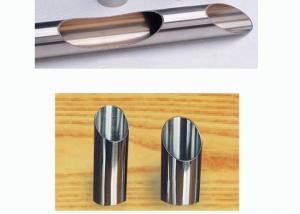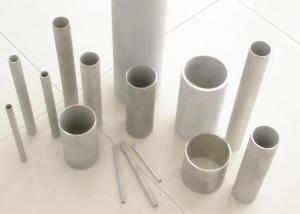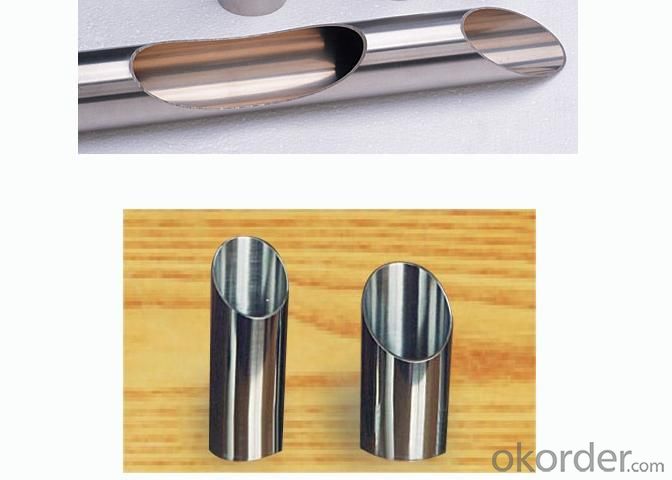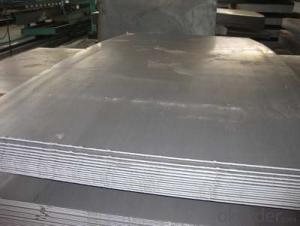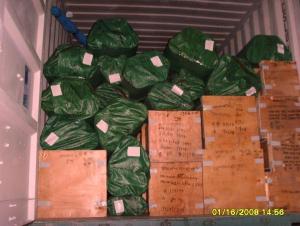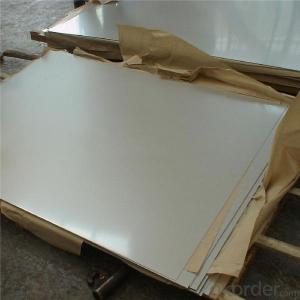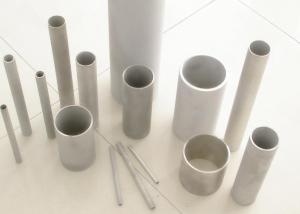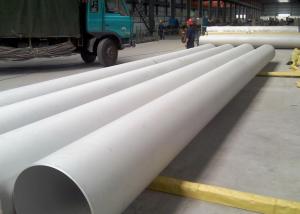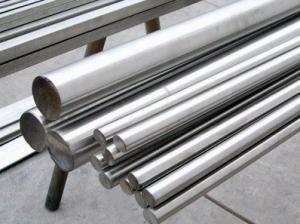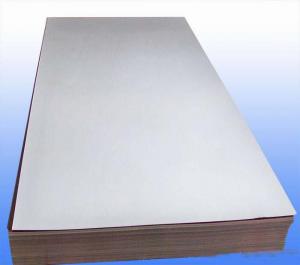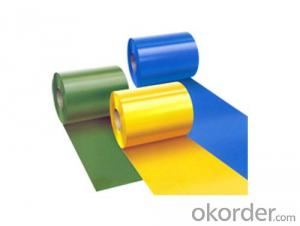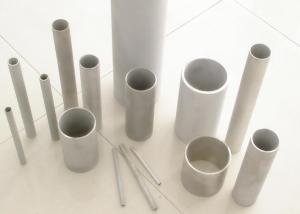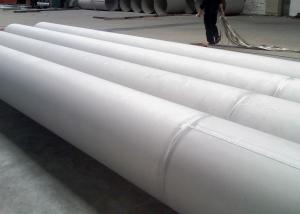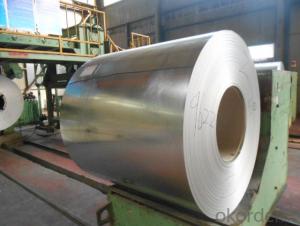321 Stainless Steel Seamless Tubing
- Loading Port:
- China Main Port
- Payment Terms:
- TT or LC
- Min Order Qty:
- 5 Tons m.t.
- Supply Capability:
- 1000 Tons Per Month m.t./month
OKorder Service Pledge
OKorder Financial Service
You Might Also Like
Stainless Steel Seamless Pipe
APPLICATION:
Construction industry.
Chemical industry
Water tube
Pulp&Paper making industry
Heat exchanger tube,boiler tube,condenser tube,etc.
Available size range of Stainless Steel Seamless Pipe
|
OUTSIDE DIAMETER |
WALL THICKNESS | ||||||||
|
INCH |
MM |
Sch10 |
Sch40 |
STD |
Sch80 |
XS |
Sch160 |
XXS | |
|
1/8" |
10.29 |
1.24 |
1.73 |
1.73 |
2.41 |
2.41 |
- |
- | |
|
1/4" |
13.72 |
1.65 |
2.24 |
2.24 |
3.02 |
3.02 |
- |
- | |
|
3/8” |
17.15 |
1.65 |
2.31 |
2.31 |
3.20 |
3.20 |
- |
- | |
|
1/2" |
21.34 |
2.11 |
2.77 |
2.77 |
3.73 |
3.73 |
4.78 |
7.47 | |
|
3/4 " |
26.67 |
2.11 |
2.87 |
2.87 |
3.91 |
3.91 |
5.56 |
7.82 | |
|
1'' |
33.40 |
2.77 |
3.38 |
3.38 |
4.55 |
4.55 |
6.35 |
9.09 | |
|
1.1/4" |
42.16 |
2.77 |
3.56 |
3.56 |
4.85 |
4.85 |
6.35 |
9.70 | |
|
1.1/2'' |
48.30 |
2.77 |
3.68 |
3.68 |
5.08 |
5.08 |
7.14 |
10.15 | |
|
2" |
60.30 |
2.77 |
3.91 |
3.91 |
5.54 |
5.54 |
8.74 |
11.07 | |
|
2 1/2" |
73.03 |
3.05 |
5.16 |
5.16 |
7.01 |
7.01 |
9.53 |
14.02 | |
|
3" |
88.90 |
3.05 |
5.49 |
5.49 |
7.62 |
7.62 |
11.13 |
15.24 | |
|
3 1/2” |
101.60 |
3.05 |
5.74 |
5.74 |
8.08 |
8.08 |
- |
- | |
|
4'' |
114.30 |
3.05 |
6.02 |
6.02 |
8.56 |
8.56 |
13.49 |
17.12 | |
|
5” |
141.30 |
3.40 |
6.55 |
6.55 |
9.52 |
9.52 |
15.88 |
19.05 | |
|
6" |
168.30 |
3.40 |
7.11 |
7.11 |
10.97 |
10.97 |
18.26 |
21.96 | |
|
8'' |
219.08 |
3.76 |
8.18 |
8.18 |
12.70 |
12.70 |
23.01 |
22.23 | |
|
10” |
273.05 |
4.19 |
9.27 |
9.27 |
15.08 |
12.70 |
28.58 |
25.40 | |
|
12" |
323.85 |
4.57 |
9.52 |
9.53 |
17.45 |
12.70 |
33.32 |
25.40 | |
|
14" |
355.60 |
4.78 |
11.13 |
9.53 |
19.05 |
12.70 |
35.71 |
- | |
|
16" |
406.40 |
4.78 |
12.70 |
9.53 |
21.44 |
12.70 |
40.49 |
- | |
|
18" |
457.20 |
4.78 |
14.27 |
9.53 |
23.83 |
12.70 |
45.24 |
- | |
|
20" |
508.00 |
5.54 |
15.09 |
9.53 |
26.19 |
12.70 |
50.01 |
- | |
|
22" |
558.80 |
5.54 |
- |
9.53 |
28.58 |
12.70 |
53.98 |
- | |
|
24" |
609.60 |
6.35 |
17.48 |
9.53 |
30.96 |
12.70 |
59.54 |
- | |
Note : We can also produce the sizes beyond this table according to the requirements of customers
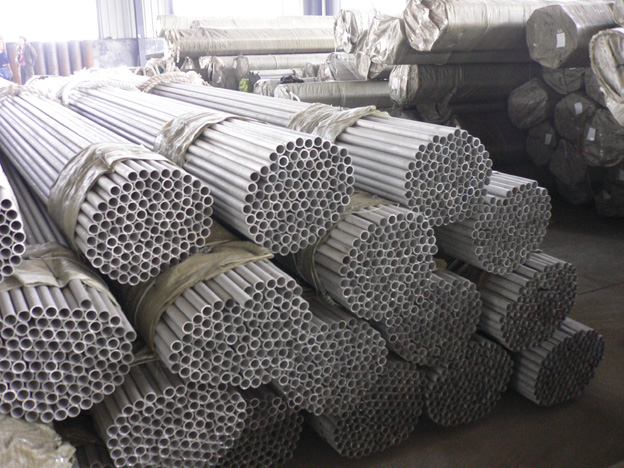
- Q: Can stainless steel sheets be used for elevator mirror panels?
- Yes, stainless steel sheets can be used for elevator mirror panels. Stainless steel is a durable and corrosion-resistant material that is commonly used in elevator design and construction. It is also highly reflective, making it an ideal choice for mirror panels. Stainless steel mirror panels not only provide a sleek and modern aesthetic to elevators but also offer excellent durability and ease of maintenance. Additionally, stainless steel can withstand the wear and tear of constant use, making it a reliable and long-lasting material for elevator mirror panels.
- Q: Welding defects analysis of 1.5mm stainless steel plate
- UndercutReasons: 1. The welding parameters do not choose U, I is too large, the welding speed is too slow.The arc is too long. The molten metal failed to fill the melting gap in time.Hazard: the working cross section of base metal decreases and the stress concentration at the undercut is concentrated.
- Q: How do you determine the thickness of a stainless steel sheet?
- To determine the thickness of a stainless steel sheet, there are several methods you can employ. The most common and accurate way is to use a digital or analog caliper. This instrument allows you to measure the thickness of the sheet with high precision. Simply place the caliper jaws on opposite sides of the sheet and close them until they are snug against the surface. The measurement displayed on the caliper will indicate the thickness of the stainless steel sheet. Another method is to use a micrometer, which is similar to a caliper but provides even more precise measurements. With a micrometer, you can measure the thickness of the sheet by placing the jaws on the edge of the sheet and gently closing them until they touch. The measurement displayed on the micrometer will show you the thickness of the stainless steel sheet. If these instruments are not available, you can also determine the thickness of a stainless steel sheet by referring to its specifications or manufacturer's information. Stainless steel sheets usually come with a label or tag indicating the thickness, which can be easily read and verified. In some cases, you may need to estimate the thickness of a stainless steel sheet without any measuring tools. In such situations, you can compare the sheet to known reference materials of different thicknesses. By visually comparing the sheet to these references, you can make an educated guess about its thickness. However, this method is less accurate and should only be used as a last resort.
- Q: What is the weldability of stainless steel sheets?
- The weldability of stainless steel sheets is generally considered to be good. Stainless steel contains a high percentage of chromium, which forms a passive oxide layer on the surface of the metal. This oxide layer provides excellent corrosion resistance and helps prevent the formation of heat-affected zones during welding. However, the weldability of stainless steel can vary depending on the specific grade and thickness of the sheets. Some grades of stainless steel, such as austenitic stainless steels (e.g., 304, 316), are highly weldable and can be easily joined using various welding techniques, including TIG (Tungsten Inert Gas) welding and MIG (Metal Inert Gas) welding. On the other hand, certain grades of stainless steel, such as martensitic or duplex stainless steels, may have lower weldability due to their higher carbon content or different microstructures. These grades often require preheating and post-weld heat treatment to avoid cracking and maintain desired mechanical properties. In addition, the thickness of stainless steel sheets can also affect their weldability. Thicker sheets may require more heat input and specialized welding procedures to ensure proper fusion and avoid distortion. Overall, stainless steel sheets are generally considered to have good weldability. However, it is important to consider the specific grade and thickness of the sheets, as well as the required welding techniques and procedures, to achieve optimal results. Professional guidance and expertise in stainless steel welding are recommended to ensure successful and durable welds.
- Q: Can stainless steel sheets be used for countertops or backsplashes?
- Yes, stainless steel sheets can be used for countertops and backsplashes. Stainless steel is a durable material that is resistant to stains, heat, and bacteria, making it an excellent choice for kitchen surfaces. It is easy to clean, maintains its appearance over time, and can withstand heavy use. Stainless steel countertops and backsplashes are commonly used in commercial kitchens due to their hygienic properties, but they are also becoming increasingly popular in residential settings for their sleek and modern look.
- Q: What are the different surface textures available for stainless steel sheets?
- Stainless steel sheets come in a variety of surface textures to meet different aesthetic and functional requirements. Some of the common surface textures available for stainless steel sheets are: 1. No. 1 Finish: This is the most common surface texture, also known as mill finish. It has a smooth, reflective surface that is obtained by hot rolling the stainless steel sheet. 2. No. 2B Finish: This surface texture is achieved through a process called cold rolling and annealing. It has a slightly matte appearance with a smooth, non-reflective finish. 3. No. 4 Finish: Also known as brushed or satin finish, this surface texture is obtained by mechanically polishing the stainless steel sheet. It has a brushed appearance with fine parallel lines, providing a textured and decorative finish. 4. No. 8 Finish: This surface texture, also referred to as mirror or reflective finish, is achieved by polishing the stainless steel sheet to a high shine. It has a glossy, mirror-like appearance that reflects light and adds a luxurious touch to applications. 5. Embossed Finish: This surface texture involves impressing a pattern or design onto the stainless steel sheet. It can range from simple textures like diamond or linen patterns to more intricate designs, providing both visual interest and improved grip for certain applications. 6. Bead Blast Finish: This surface texture is created by blasting the stainless steel sheet with fine glass beads or other abrasives. It produces a uniform, matte finish with a slightly roughened texture, suitable for applications where a subdued appearance is desired. 7. Etched Finish: This surface texture involves chemically etching the stainless steel sheet to create patterns or designs. It can produce intricate and detailed textures, offering a unique and artistic finish. These are just a few examples of the different surface textures available for stainless steel sheets. Each texture has its own distinct characteristics, allowing for a range of design possibilities in various industries such as architecture, interior design, automotive, and more.
- Q: Are stainless steel sheets suitable for kitchen countertops?
- Yes, stainless steel sheets are highly suitable for kitchen countertops. Stainless steel is a popular choice for kitchen countertops due to its numerous benefits. Firstly, stainless steel is extremely durable and resistant to stains, heat, and scratches. This makes it perfect for a high-traffic area like the kitchen, where spills, hot pans, and knife marks are common. Additionally, stainless steel is non-porous, which means it doesn't harbor bacteria or germs, making it a hygienic choice for food preparation areas. It is also easy to clean and maintain, as it doesn't require any special cleaning products or sealants. A simple wipe with a damp cloth is usually enough to keep it looking shiny and new. Furthermore, stainless steel has a sleek and modern appearance that complements various kitchen styles and designs. It can be paired with different cabinetry colors and materials, creating a timeless and contemporary look. Stainless steel is also versatile, as it can be custom fabricated to fit any kitchen layout, including seamless integration with sinks and backsplashes. Lastly, stainless steel is an environmentally friendly choice for kitchen countertops. It is a recyclable material, and many stainless steel products are made from recycled steel. This makes it a sustainable option for those looking to reduce their environmental impact. In conclusion, stainless steel sheets are an excellent choice for kitchen countertops due to their durability, resistance to stains and scratches, hygienic properties, easy maintenance, sleek appearance, and environmental friendliness.
- Q: Is there a big price difference between the SUS304 stainless steel plate and the drawing plate?
- Wire drawing is the surface of a steel processing methods, 304 and 201 steel plates can be processed drawing, the price difference is not very large, it will be more than a processing fee. The steel plate after drawing is more likely to rust than the steel plate on the 2B surface.
- Q: What is the stainless steel grid board? What areas of stainless steel mesh panels are used in?
- Stainless steel grid plate, also called stainless steel steel grid plate, the two are the same product, just name different
- Q: How do you prevent pitting corrosion on stainless steel sheets?
- To prevent pitting corrosion on stainless steel sheets, there are several measures that can be taken: 1. Proper alloy selection: Choosing the right grade of stainless steel with high resistance to corrosion is crucial. Grades such as 316 and 904L are known for their excellent resistance to pitting corrosion. 2. Passivation: Stainless steel sheets should be passivated after fabrication to remove any free iron or contaminants on the surface. Passivation involves treating the sheets with an acid solution, followed by a thorough rinse and drying. This helps to restore the protective chromium oxide layer on the surface, enhancing corrosion resistance. 3. Regular cleaning and maintenance: Stainless steel sheets should be cleaned regularly to remove any dirt, debris, or contaminants that can lead to pitting corrosion. Mild soap, water, and a soft cloth or sponge can be used for routine cleaning. Harsh or abrasive cleaners should be avoided. 4. Avoid exposure to aggressive environments: Stainless steel sheets should be protected from exposure to chemicals, chlorides, acids, and other corrosive substances. If such exposure is unavoidable, proper measures like the use of protective coatings or barriers should be implemented. 5. Avoid stagnant conditions: Pitting corrosion is often accelerated in stagnant or low-flow conditions where oxygen levels are depleted. Ensuring proper ventilation and circulation of air or fluids can help prevent pitting corrosion on stainless steel sheets. 6. Regular inspection and maintenance: Periodic visual inspection and monitoring of stainless steel sheets can help identify any early signs of pitting corrosion. If any pitting is noticed, immediate action should be taken to address the issue, such as applying a suitable corrosion inhibitor or protective coating. By following these preventive measures, it is possible to minimize the risk of pitting corrosion on stainless steel sheets, ensuring their long-term durability and performance.
Send your message to us
321 Stainless Steel Seamless Tubing
- Loading Port:
- China Main Port
- Payment Terms:
- TT or LC
- Min Order Qty:
- 5 Tons m.t.
- Supply Capability:
- 1000 Tons Per Month m.t./month
OKorder Service Pledge
OKorder Financial Service
Similar products
Hot products
Hot Searches
Related keywords
